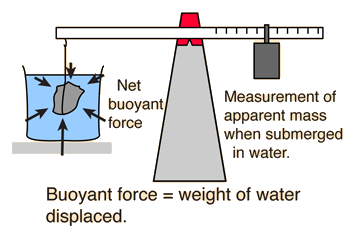Buoyant Force
 |
Some of the useful applications of buoyancy and Archimedes' principle are to the experimental determination of density.
|
Buoyancy concepts
| HyperPhysics***** Mechanics ***** Fluids | R Nave |
Buoyant Force
|
Index Buoyancy concepts | |||||
|
Go Back |
Buoyant Force, General Fluid
|
Index Buoyancy concepts | ||
|
Go Back |